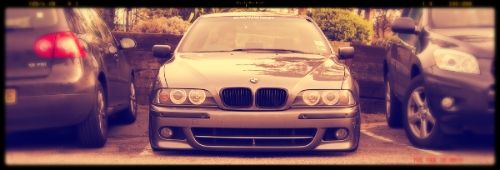ha!
Announcement
Collapse
No announcement yet.
Offset is just a small part of the equation
Collapse
X
-
Floccinaucinihilipilification
-
wait, there's no question
 Hatchbacks, wagons... It's NOT all the same. You want in? Don't get a mazda 3, get a mazda 6 wagon. Don't get a wrx get a legacy wagon. and theres a reason the A3 isn't called the A3 avant... Scion does not make a wagon it makes a weird van, but no wagons
Hatchbacks, wagons... It's NOT all the same. You want in? Don't get a mazda 3, get a mazda 6 wagon. Don't get a wrx get a legacy wagon. and theres a reason the A3 isn't called the A3 avant... Scion does not make a wagon it makes a weird van, but no wagons
Sincerely,
The Wagon Mafia:Inner Circle
P.S. Is your tail a wagon?
Show cars are lame.
Comment
-
Yeah I was going to post this in response to another comment, but it quickly went off-topic so I thought I'd just create a new post.Originally posted by Rebounder View Postwait, there's no question
My point was just that a lot of people treat offset as some magic number, but it's really just part of a bigger equation. I see posts about calculating your offset, but not very many describing what to do with it.
I know the info is out there, and most of us know what to do with it. It's not new information by any means.
Comment
-
You're absolutely right, but most times we speak of offset it is in relation to a car. Which ultimately does make it a magic number.
Nevertheless, you posted a shit ton of information that I read none of, but I'm assuming it's accurate, I'm sure it will be helpful to at least a couple people.
Comment
-
Lovely post, but next time instead of writing so much, that most people are not interested in reading. Maybe just setup the formel for the calcalutation principal..
I will remeber this post, and use it next time i have to calcalulate a offset or simular.
Comment
-
Ok, long post... with some pictures, and more math. This may look complicated, but it's not that bad. Doing some calculations may give you a bit more flexibility for wheel choice, and not only help calculate the widest wheels you can run, but what the range of offset you'll need for those wheels.
NOTE: remember to convert inches to mm (or vice versa) so your units match. [inches] * 25.4 = [mm]

Using the wheel size and offsets from the OEM wheels you can figure out what the stagger of the hubs is (if there is any). As I mentioned earlier, my car is pretty extreme because of the inboard brakes on the rear. My stagger is 55.5mm. This piece of information is vital to making sure my front to rear position looks right on my car.
(([front wheel width]/2) - [front offset]) - (([rear wheel width]/2) - [rear offset]) = [hub stagger]
For my car:
((178/2) - 23) - ((203/2) +20) = -55.5 (note my rear ET is negative so I had to switch the signs, two negatives make a positive, instead of subtracting)
*keep in mind that we're using the OEM wheel position as a judge of stagger. If the OEM had wheels that aren't inline, the stagger number will preserve the OEM wheel difference.

Then we figure out where our interference might be. We do this so we can figure out the largest wheel we can run. The important information here is the maximum front (outside) spacing and the maximum back (inside) spacing. This is a pain in the butt because it's almost impossible to find everything that might interfere (suspension travel and wheel position being what they are). We just need a general idea here though. A tape measure off the existing wheel gives us a good idea.
([Existing wheel width/2]) + ET + [distance to inside interference] = [maximum back (inside) spacing]
([Existing wheel width/2]) - ET + [distance to outside interference] = [maximum front (outside) spacing]
[max front spacing] + [max back spacing] = [max wheel width]
The nice thing is that we don't need to know the exact total width, because when we buy wheels we exclude the bead, but the bead is still important to figuring out interference. If our OEM wheels are 7" wide, that's 7" without bead. Because we're measuring the additional distance and adding to the OEM size, the width of the bead is included.
For example, my OEM front was 7" with 23ET. I have another .75" inside and .75" outside before interference. Perhaps it's obvious that I can run an 8" wheel (because I have 8.5" of available room), but I don't have much room for error when choosing my offset. The question is... what offset should I be targeting? I really only need to solve for either front (outside) or rear spacing, if I solve for front (outside), I can use that to figure out what I should run for the front too.
(177.8/2) - 23 + 19 = 84.9mm (this is the maximum distance from the hub to the edge of the wheel before the wheel hits interference).
I calculate this backspacing by
([prospective wheel width]/2) - [front (outside) spacing]
(203.2/2) - 84.9 = 16.7mm (this is my minimum offset, any less and the wheel sticks out too far.)
I know, because I have 8.5" of space that this wheel has 1/2" of "wiggle room". If I want to know my maximum offset I can just add my 1/2" to the offset:
16.7 + 12.7 = 29.4mm (this is my maximum offset, any more and the wheel is too far in and hits things.)
So now I know I'm looking for an 8" wheel with somewhere between a 17 to 29 ET offset.
I think a front wheel with a 20ET offset is probably good. It should give me just a little clearance on the front and plenty in the back.
So now I want to figure out what my wheel on the rear should be, including my earlier calculation for hub stagger.
To do this, I'm going to calculate what my target front (outside) space on my rear wheel should be.
(203.2/2) - 20 = [front space for front wheels] = 81.6mm
Since I know my stagger is 55.5mm. I need to add that in:
81.6 + 55.5 = [target front spacing for rear wheels] = 137.1mm
I measured my rear wheels and I know my target width is 10" and my range of offsets is somewhere between -20 to -7 ET so as long as my calculations end up between those offsets I'll be happy.
To calculate my offset from my front (outside) spacing for my rear wheels:
([new wheel width]/2) - [front (outside) spacing] = [offset]
(254/2) - 137.1 = 10.1mm
So now I know, that assuming I calculated my interferences correctly that my new wheels should be:
8" with ET20 for the front
10" with ET-10 for the rear
I also know that they'll sit a little more than a 1/2 inch further out than the OEM wheels, but it will preserve the OEM difference between the wheel position (parallel or not).
Of course things aren't always that simple. For instance finding negative offsets are difficult. Chances are I'm not going to find the perfect wheel. Luckily I can get spacers.
If I can only find a 10" wheel with a ET15, then I need to find a spacer... luckily simple subtraction gets me there:
[target offset] - [wheel offset] = [spacer size]
-10 - 15 = 25mmLast edited by DrieStone; 08-06-2012, 02:28 PM.
Comment
-
True!Originally posted by SeanDub View PostYou're absolutely right, but most times we speak of offset it is in relation to a car. Which ultimately does make it a magic number.
Nevertheless, you posted a shit ton of information that I read none of, but I'm assuming it's accurate, I'm sure it will be helpful to at least a couple people.
Comment
-
then adjust your coilovers for real lows and fuck up everything you just worked out.Float like a Cadillac, Sting like a Beemer!
http://www.stanceworks.com/forums/showthread.php?t=24326
Comment



Comment